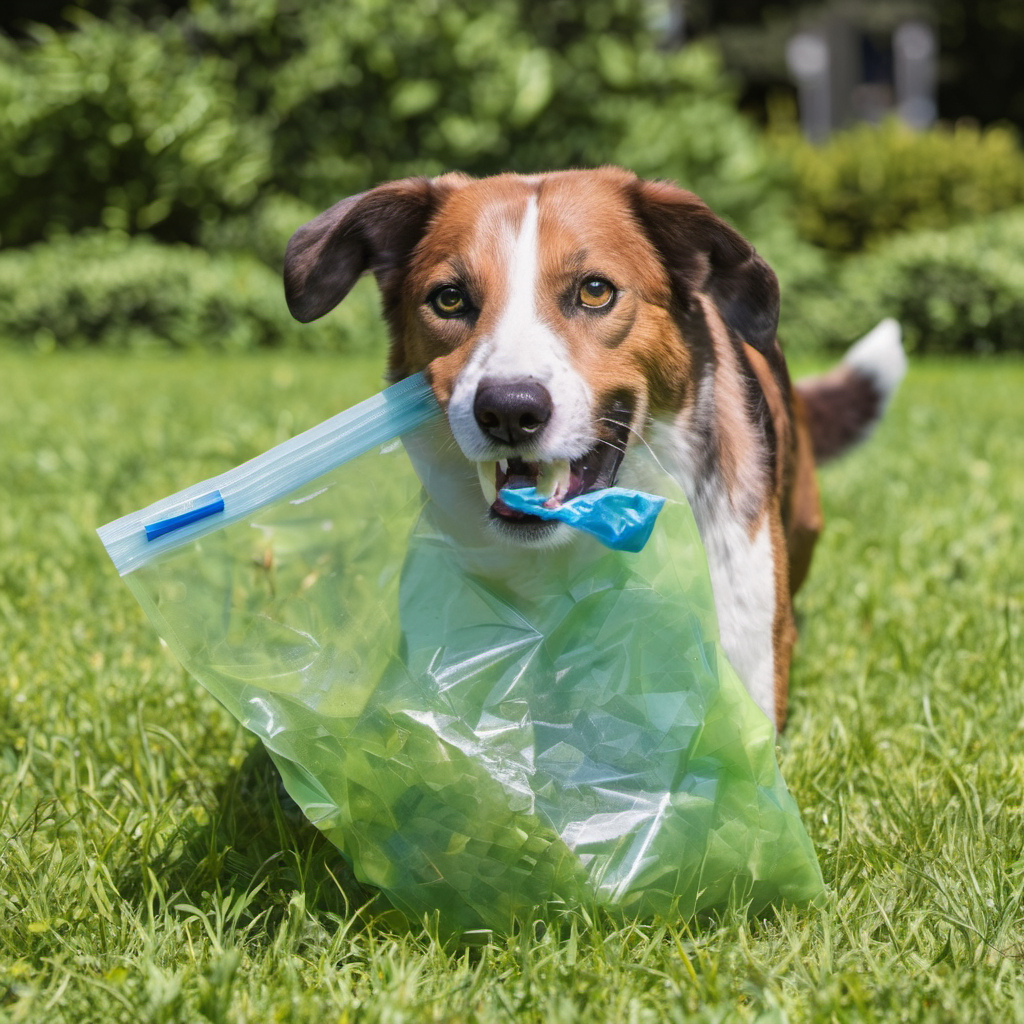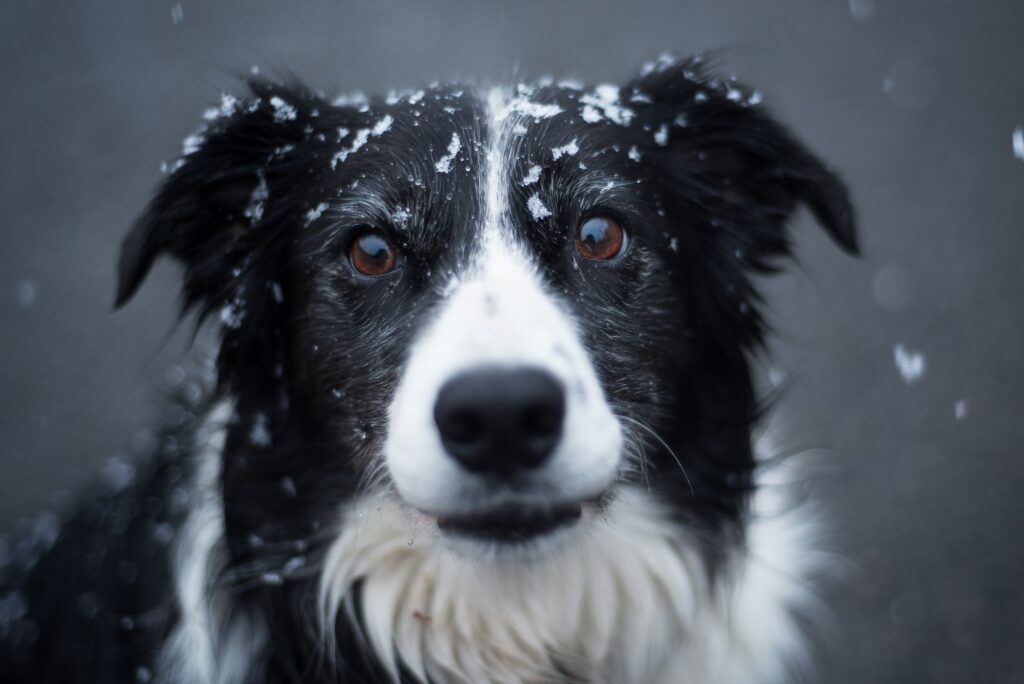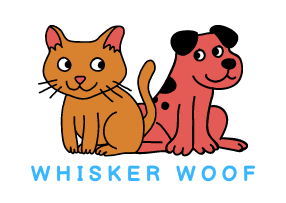Our homes are often filled with plastic objects, such as toys, utensils, and garden tools, that can be potentially dangerous to our furry friends when ingested unknowingly. Every dog owner is familiar with the unease when they discover their canine has accessed something off-limits. Dogs possess an inherent knack for locating and ingesting objects not intended for consumption, be it the remnants of chicken bones from the previous evening’s meal or a cherished toy belonging to your child. An everyday object that dogs often ingest is the Ziploc bag. However, what are the consequences if your dog consumes one as a meal?

What Happens When a Dog Eats a Ziploc Bag?
Plastic bags pose a significant physical danger to dogs, including physical obstruction and chemical contamination. Smaller breeds may be particularly vulnerable to blockages in their intestines, which can be life-threatening. Some plastic bags may also contain chemicals, potentially introducing harmful chemicals into the dog’s system. The immediate danger of choking is also present, as smaller pieces of plastic or stuck parts can pose a significant hazard. Therefore, it is crucial to be aware of the potential risks associated with plastic bags. Being aware of the potential risks associated with plastic bags is essential. Here is a bullet point of the potential Risks involved:
- Small, smooth objects can pass through dogs without causing harm.
- Awkward shapes or rough surfaces may cause mild diarrhea or vomiting.
- Sharp edges and pointed plastic can pierce the gut wall, leading to infection and medical emergencies.
- Plastic string or cord can cause intestinal blockage.
Common Reasons Dogs Ingest Ziploc Bags
Dogs often chew on non-food items like Ziploc bags to explore their surroundings, out of boredom, anxiety, stress, and nutritional imbalances. This behavior can be triggered by separation anxiety, changes in the household, or unfamiliar environments. Some dogs have inherited instincts that drive them to chew on certain items, while scents and tastes can also attract them. Teething and dental discomfort can also lead dogs to chew on objects to alleviate pain. In summary, dogs’ chewing behavior can be influenced by various factors, including curiosity, boredom, anxiety, nutritional imbalances, attention-seeking behavior, inherited instincts, scent and taste appeal, and dental discomfort.
The Risks Involved When A Dog Ingests A Ziploc Bag
The risk of your dog ingesting a Ziploc bag depends on several factors:
- Preexisting health conditions.
- Size of the bag
- Type of plastic
- Bag portion
- Ingestion time
- Size and breed of the dog
Smaller bags or fragments are more likely to pass through the digestive tract without causing a blockage, while larger bags pose a higher risk. Dogs with larger breeds may have a better chance of passing a small object without issues, while smaller breeds are more susceptible to blockages. Ingesting a portion of the bag or torn into smaller pieces may be lower, but larger portions or intact bags increase the likelihood of causing an obstruction. Observing your dog’s behavior and any associated symptoms is crucial to determining the potential danger to your pet.

Action to Take When A Dog Ingest A Ziploc Bag
Upon discovering your dog has ingested a Ziploc bag, take immediate action to ensure their safety. Stay calm and observe your dog’s behavior for signs of distress or abnormality. Contact your veterinarian and provide specific information about the incident. Avoid inducing vomiting without veterinary guidance, as it can lead to more harm if brought back up. Prevent further access to non-food objects and secure your living space. Avoid administering home remedies or over-the-counter medications without professional advice. Monitor your dog’s condition for changes in behavior, appetite, or bowel movements. Seek professional guidance from your veterinarian for personalized advice and the right decisions for your dog’s health and well-being.
What to Expect at the Veterinarian
During a veterinary appointment, your dog’s veterinarian will conduct a thorough physical examination to assess any signs of discomfort or distress. They may recommend diagnostic procedures, such as X-rays or ultrasound scans, to identify the Ziploc bag’s location within the dog’s digestive system. The veterinarian will discuss the dog’s symptoms and behavior changes since ingesting the bag. Treatment options will be presented, including monitoring progress, surgical intervention, and potential complications. A risk assessment will be provided, and if necessary, surgery may be recommended. If necessary, medications and aftercare instructions will be provided. Follow-up appointments may be scheduled to assess the dog’s recovery. The veterinarian will answer any questions and guide you towards the best decisions for your dog’s health.
Preventive Measures for the Future
To prevent your dog from ingesting non-food items, take proactive steps such as making your living space dog-proof, providing supervision and training, choosing safer alternatives like reusable fabric bags, engaging your dog in regular exercise and mental stimulation, using crate training for unsupervised dogs, routine veterinary check-ups to detect underlying health issues, providing a balanced diet and nutritionally complete needs, and engaging your dog’s natural instincts with appropriate behavioral enrichment. By following these preventive measures, you can create a safer environment for your dog and ensure they lead a healthy, happy life. Consistency and attentiveness are key to maintaining your dog’s well-being and ensuring they lead a healthy, happy life.

Conclusion
Dogs can swallow items like plastic bags, but cautiousness is crucial. Understanding risk factors like bag size, material, and dog health helps make informed choices. Bonding through challenges and addressing behavioral triggers is important. Prioritizing professional guidance from a veterinarian ensures your dog’s welfare. Responsible pet owners must stay vigilant, prepared, and foster a strong connection with their furry companions to create a healthy environment.
Frequently Asked Questions
What should I do if my dog ate a Ziploc bag?
If your dog ingests a Ziploc bag, it’s essential to take immediate action while remaining composed. Start by observing your dog for any signs of distress such as vomiting, retching, abdominal discomfort, or changes in behavior. Keep an eye on their stool as well. Next, contact your veterinarian promptly. They possess the expertise to assess the situation accurately based on factors like the bag’s size, your dog’s breed, and overall health. Following their advice is crucial, as they will guide you on whether your dog needs to be seen immediately or if observation is sufficient. Remember, each case is unique, so seeking professional guidance is vital.
Can a dog pass a swallowed Ziploc bag naturally?
The ability of a dog to pass a swallowed Ziploc bag naturally depends on several factors. If the bag is relatively small and made of flexible material, there’s a chance it might move through the digestive system without causing harm. However, this isn’t a guarantee, and the situation requires careful monitoring. While some dogs may pass foreign objects without issue, others could experience complications. To ensure your dog’s safety, consult your veterinarian who can assess your dog’s specific situation and provide appropriate advice based on their expertise.
How can I prevent my dog from ingesting non-food items?
Preventing your dog from ingesting non-food items involves a multi-faceted approach. Firstly, secure your living space by keeping plastic bags and hazardous items out of your dog’s reach. Secondly, address your dog’s mental and physical needs through engaging activities such as puzzle toys, interactive play, and daily walks. Thirdly, positive reinforcement training is effective in redirecting their behavior. Teach commands like “leave it” to discourage them from investigating dangerous items. Finally, provide safe alternatives like durable chew toys to satisfy their natural chewing instinct. By combining these strategies, you create an environment that discourages ingesting non-food items.
When should I induce vomiting if my dog swallowed a Ziploc bag?
Inducing vomiting in dogs should never be attempted without consulting a veterinarian first. Timing is critical; some objects can be harmful if brought back up. Additionally, the effectiveness of vomiting induction depends on various factors, including the type of object swallowed and the time that has elapsed since ingestion. Your veterinarian can provide personalized advice based on your dog’s size, the type of bag ingested, and their overall health. Their expertise ensures that vomiting is carried out safely and effectively if deemed necessary.
Why is contacting a veterinarian important after my dog swallows a plastic bag?
Contacting a veterinarian after your dog swallows a plastic bag is vital due to their ability to assess the situation comprehensively. Veterinarians consider various factors such as the size of the dog, the type of bag material, any symptoms observed, and the potential risk of complications. Their expert evaluation guides you on whether immediate intervention is needed, such as inducing vomiting, or if a more conservative approach of observation is appropriate. By seeking professional guidance, you ensure the best possible outcome for your dog’s health and well-being.


3 thoughts on “My Dog Ate A Ziploc Bag: What To Do?”